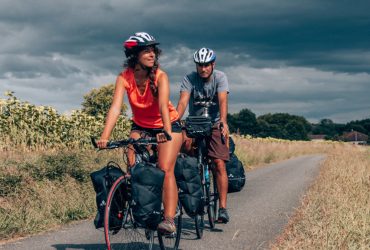Between the influx of tourists in the mountains and the impact of winter sports on the fauna and flora, skiing and snowboarding are not the most eco-friendly disciplines. But the resorts are aware of this and some are now recognized for their efforts in this area. Here is an overview of the initiatives that are making the French massifs more eco-responsible.
The green flake is spreading
Developed by the Mountain Riders association since 2012, the Green Snowflake label is the best way to find out which resorts are committed to a policy of sustainable development. After Châtel, Chamonix-Mont-Blanc, Megève, Morzine-Avoriaz and Les Arcs-Bourg Saint Maurice, six resorts in Savoie and Haute-Savoie are in the process of obtaining this certification (Le Grand-Bornand, Saint François Longchamp, Combloux, Manigod, Saint-Gervais Mont-Blanc, Valloire). To obtain this label, resorts are rated on 20 criteria, including accommodation, protected areas, eco-responsible events, local energy production, artificial snow, rainwater management, car-sharing and car-pooling.
La Pierre Saint-Martin : The pioneer
In the Pyrenees, the small resort of La Pierre Saint-Martin did not wait for the global awareness of global warming to commit itself to the preservation of its environment since 2005. Labelled "flocon vert" (green snowflake), the resort located in the commune of Arette had thus validated the 31 essential criteria of the label in 2013. A rarity when it comes to assessing the ecological efforts of a resort. For example, the construction of the ski lift has for many years been subject to specific environmental monitoring, such as the integration of arrival and departure stations, the protection of grassy areas, the protection of ptarmigan and capercaillie reproduction and the revegetation of certain areas. The resort has also developed its public transport system to allow skiers to access it. This is useful when you know that a full bus is equivalent to twice as little C02 emissions per person as a car with two passengers. Finally, the groomer drivers are trained in eco-driving, the machines are regularly renewed and GPS tracking of the groomers has been set up to optimize traffic and grooming plans.
Courchevel to limit car use in the resort
In Courchevel, the Alpinium is the gateway to the 3 Valleys. This 18,000 m2 multi-service building has 500 parking spaces and a gondola station that takes less than six minutes to reach Courchevel 1850, allowing access to the resort by soft mobility. The aim of this structure, which will be inaugurated in 2020, is to limit the number of vehicles circulating in the resort. The building (which cost 24.8 million euros to the Courchevel Town Hall) has been buried for better integration into the landscape. It also houses the reception offices of Courchevel Tourism and the ESF, and those of the Organising Committee of the Courchevel Méribel World Alpine Ski Championships, which will take place in 2023. Finally, its 6,500 m2 grass roof can be used for sports training courses in the summer for rugby or football.
Sieh dir diesen Beitrag auf Instagram an
An eco-friendly cable car in Peisey Vallandry
Located in the Paradiski area, the new 10-seater Vallandry gondola has been designed in the most eco-responsible way possible. It has photovoltaic panels on the roof of the arrival structure, which will produce 50 % of the energy required by the resort by 2030. A heat storage system for the machinery has also been installed to reuse this energy within the facility. Finally, rainwater is collected and redistributed for the site's non-potable water needs.
Carpooling and intermodality are developing in the massifs
Starting this winter 2021-2022, the resorts of Valloire, Saint François Longchamp, Sainte Foy Tarentaise, La Toussuire and Morzine Avoriaz have forged a new partnership with Tictactrip, a platform promoting intermodality by combining train, bus and carpooling on the same journey. For its part, La Clusaz has teamed up with the Mov'ici platform, which connects drivers with free spaces in their vehicles in the region. In Avoriaz 1800, seasonal workers and employees can get around the valley thanks to the BlaBlaLines home-work carpooling application. Finally, in the Lake Geneva region, a car-sharing service operates on the principle of bus routes. Passengers go to the stops (4 terminals) to request a journey (6 destinations available) by sending an SMS, just as if they were taking the bus. Drivers on this route are informed in real time via illuminated signs or by notification via the Hé!Léman app. All they have to do is stop at the stops to pick up passengers.










